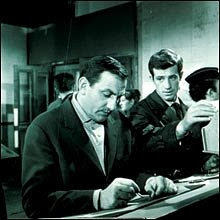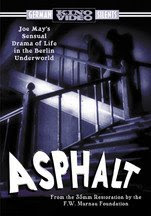 Coronación (2005 DVD)
Coronación (2005 DVD)Dirigida por Silvio Caiozzi
Chile, 2000
En español con subtítulos en inglés
Después de haber leído tantas reseñas en alabanza de esta película, tengo que confesar que la obra me decepcionó. Basada en la novela de José Donoso, Coronación cuenta la historia de Don Andrés, un solterón burgués de 58 años que se enamora de Estela, una joven "morena" de 17 años, después de contratarla para cuidar a su abuela senil. Cuando Estela se enamora de un tal Mario y se queda embarazada, la envidia y la obsesión sexual de Don Andrés se convierten en las causas de un colapso psicológico. Una especie de lucha de clases sigue, acompañada por varias escenas de embriaguez por parte de los ricos y los pobres.
 Aunque no conozco el libro de Donoso, me imagino que él debe haberlo manejado el tema de "decadencia" mucho mejor que el guión de Caiozzi lo hace. Si la actuación de Adela Secall como Estela y María Cánepa como la abuela (juntas, arriba) es impresionante, otros entre el elenco parecen venir del mundo de telenovelas en cuanto a su nivel de "talento". No hay mucha sutileza por lo que se refiere a los personajes, y al fin y al cabo estos "estereotipos que andan" son aburridos. Muy, muy aburridos. (Cinemateca, distribuido por Facets Video: http://www.facets.org/)
Aunque no conozco el libro de Donoso, me imagino que él debe haberlo manejado el tema de "decadencia" mucho mejor que el guión de Caiozzi lo hace. Si la actuación de Adela Secall como Estela y María Cánepa como la abuela (juntas, arriba) es impresionante, otros entre el elenco parecen venir del mundo de telenovelas en cuanto a su nivel de "talento". No hay mucha sutileza por lo que se refiere a los personajes, y al fin y al cabo estos "estereotipos que andan" son aburridos. Muy, muy aburridos. (Cinemateca, distribuido por Facets Video: http://www.facets.org/) 



























